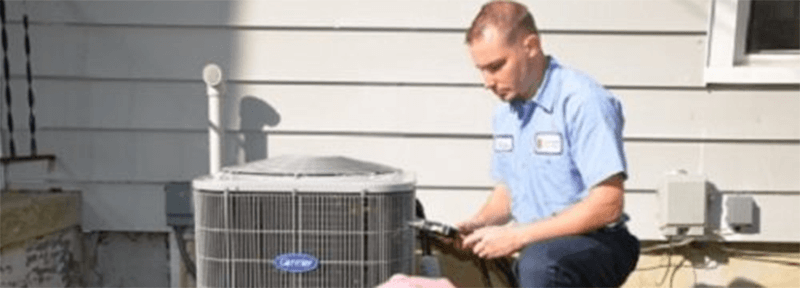
Hydrofluorocarbon (HFC) refrigerants are the current choice for most of the U.S. air conditioning industry and for a good reason. Many of the HFC refrigerants used today are non-ozone depleting, nonflammable, recyclable and energy efficient.
While HFCs have good environmental properties and promote energy efficiency, many are now also considered to be global warming gases due to their relatively high Global Warming Potential (GWP).
The Environmental Protection Agency (EPA) began regulating HFC refrigerants in 2015 with the introduction of the Significant New Alternatives Policy (SNAP).
Since then, the industry has made significant progress in identifying the next generation of low-GWP refrigerants. However, the events of the past year leave the timing of the transition uncertain.
U.S. Court Vacates SNAP Rule 20
In August 2017, the U.S. Court of Appeals for the D.C. Circuit ruled to vacate EPA SNAP Rule 20. Responding to a challenge submitted by two refrigerant manufacturers, the court ruled that the EPA had exceeded its authority to require the replacement of HFCs under Section 612 of the Clean Air Act.
The decision was based on the reasoning that Section 612 was created to curb substances containing higher ozone depletion potential, not to address the matter of greenhouse gases and their associated GWPs.
In January 2018, the D.C. Circuit Court of Appeals appealed this decision, but it was denied. The ruling to vacate Rule 20 as initially enacted calls into question the future of EPA SNAP. In June, Honeywell and Chemours filed a joint appeal with the Supreme Court. The EPA is actively working on new regulation. However, there is currently no mechanism in place for the EPA to regulate refrigerants based upon GWP.
Kigali Amendment
The U.S. has not yet ratified the 2016 Kigali Amendment to the Montreal Protocol, a global treaty created to phase out harmful greenhouse gases and ozone-depleting substances. More than 21 countries ratified the treaty, including Canada and most of Europe. Although the U.S. has yet to ratify, in November 2017, the U.S. State Department announced that it initiated the process to consider ratification.
There is industry support for the ratification of Kigali. In fact, the AHRI and the Alliance for Responsible Atmospheric Policy released an economic impact study report concluding ratification is good for American jobs and will allow US manufacturers to remain global leaders.
A group of bipartisan senators also introduced a bill earlier this year named the American Innovation and Manufacturing Act. If passed, this bill would allow the EPA to phase down HFCs used in refrigeration and air conditioning in consultation with the industry.
California Air Resources Board (CARB) HFC phase down
With federal efforts to regulate HFCs stalled, the California Senate directed the California Air Resources Board (CARB) to preserve the original framework outlined in EPA Rules 20 and 21. CARBs proposal also calls for more aggressive phase-down measures in line with the EU’s fluorinated greenhouse gases (F-gases) efforts.
The first CARB proposal looked to preserve the federal framework in new retail food refrigeration, food dispensing equipment, refrigerated vending machines, and foams.
The second proposal calls for future rules on refrigerant use according to their GWP and refrigerant charge in specific applications. Under these guidelines:
- Refrigerants with a GWP of 150 or more would be prohibited in chillers.
- Refrigerants with a GWP of 750 or more would be prohibited in new stationary air-conditioning systems containing 2 or more pounds of refrigerant beginning in 2021.
Approved by the board, CARBs Rulemaking 1 proposals will take effect as early as 2019. Draft regulation regarding CARB’s Rulemaking 2 proposals will be released in October.
California is only the first of several states to introduce HFC regulations. New York recently announced that they too would begin to phase out HFC’s.
Standards and Codes
Many low-GWP refrigerants are classified as A2L, or mildly flammable. ASHRAE standards, UL standards, and building codes are in the process of being modified to allow the use of A2Ls in residential and commercial HVAC applications. Building codes vary from state to state and in some cases town to town. Local code adoption to allow the use of flammable refrigerants in comfort cooling may take years to accomplish.
Factoring Energy into the Regulatory Equation
HFC Refrigerants are only one factor in the regulatory equation. The HVACR industry is also dealing with energy mandates from the Department of Energy (DOE). Both residential and commercial air conditioning and heat pump sectors will see new energy efficiency regulations effective January 1, 2023.
The most recent regulatory developments create an opportunity for regulators to align refrigerant regulations with the DOE’s energy efficiency mandates, allowing equipment manufacturers to design systems that are low-GWP and highly efficient. It’s in the best interest of all parties to push for coordination and cooperation between the two efforts.
All of these factors combined leave the industry begging for certainty as they continue to invest in new technologies to enable product redesigns.


